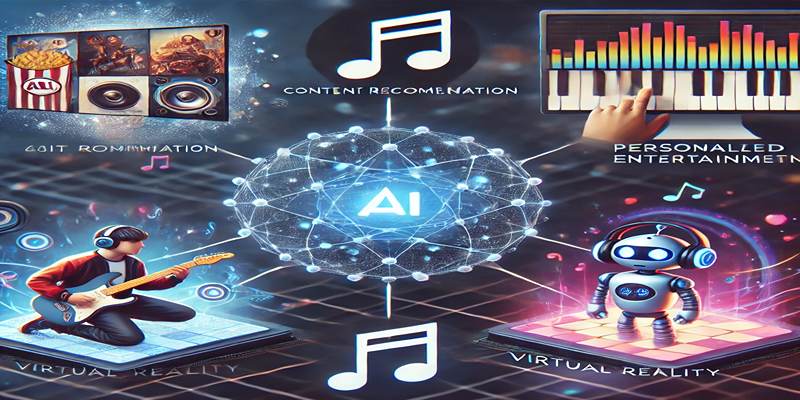AI is making things easier, faster, and more automated. It has changed how we use technology and is now an important part of different industries. However, do you know not all AI systems work the same way? There are two major categories of AI: traditional AI and generative AI. Traditional AI is an old technology. On the other hand, generative AI is AI's more advanced and creative side.
Both types of AI are taking over the world. However, understanding the differences between traditional AI and generative AI is important to decide which is best for you. Therefore, this article discusses traditional and generative AI's characteristics, uses, and differences. So, keep reading and learn everything about traditional AI and Generative AI in detail here!
What is Traditional AI: An Understanding
Traditional AI is a type of artificial intelligence designed to complete specific tasks. It is also called Narrow AI or Weak AI. Traditional AI uses predefined rules and algorithms. These systems operate within a limited scope. These types of AI are best for structured problem-solving, but they cannot think beyond their programmed instructions. Traditional AI analyses input data following set guidelines and makes decisions based on learned patterns. For example, in a chess game, the AI follows the rules and moves based on the player's actions. However, it does not develop new strategies on its own. Traditional AI is commonly used in chatbots, self-driving vehicles, and automated gaming systems.
Characteristics of Traditional AI
Here are the characteristics that will explain what traditional AI is:
- It works based on fixed rules and instructions created by programmers.
- Traditional AI is designed for specific tasks and cannot work beyond its intended purpose.
- It analyzes data, recognizes patterns, and makes predictions accordingly.
- It has limited learning ability, as it depends on human-provided data.
- Traditional AI cannot think creatively or develop new ideas on its own.
- It also follows a structured approach, which is why it is predictable and restricted.
- It is best for automation but lacks flexibility compared to advanced AI.
- It requires constant updates and improvements from human programmers to stay relevant and accurate.
Use Cases of Traditional AI
Traditional AI is commonly used in various industries and everyday applications. One example is spam filters, which help keep unwanted emails out of inboxes by detecting patterns in messages. Another use is recommendation systems, which suggest movies, products, or music based on a user's past choices. These systems analyze users' browsing history and provide recommendations accordingly.
Additionally, Virtual assistants, like Siri, also rely on traditional AI. They follow programmed instructions to understand and respond to basic questions. Traditional AI plays an important role in automation. It makes digital services smooth and efficient. It is highly effective in handling repetitive tasks and improving user experiences.

What is Generative AI: An Understanding
Generative AI is a type of artificial intelligence that creates new content, like text, images, and other forms of data. It works by studying large amounts of information. Afterward, it recognizes patterns and uses that knowledge to generate something new. This process relies on machine learning. AI can predict and produce relevant outputs based on the analyzed data. A similar AI type is Predictive AI. Predictive AI also uses machine learning to detect patterns and make predictions. However, Generative AI focuses on creating new content, not just forecasting outcomes. Generative AI depends on human input. The human input is usually known as a "prompt." It can be a command or set of instructions that guides the AI in creating the desired result. Prompts are not limited to text. The prompt can also include images, videos, or audio.
Characteristics of Generative AI
Here are the characteristics that will explain what generative AI is:
- Generative AI generates original content using advanced neural networks like GANs and VAEs.
- It recognizes patterns in data to create relevant and unique outputs.
- This type of AI is highly versatile and capable of producing text, images, music, and more.
- It creates new content based on prompts rather than just analyzing existing data.
- Generates fresh and meaningful results tailored to user instructions.
- It enhances creativity, automation, and innovation across multiple fields.
- Generates content miming human creativity, like writing stories, composing music, or designing artwork.
Use Cases of Generative AI
Generative AI is already being used by many businesses to improve user experience. One common use is in chatbots and virtual assistants. These tools provide human-like conversations and personalized responses. They will help answer questions, offer support, and naturally assist users. Another key application is code generation. Generative AI can write, debug, and suggest improvements for code based on simple instructions. It makes software development faster and easier. Generative AI is also used for personalized recommendations. It analyzes user preferences and past interactions and suggests relevant content, like movies, products, or music. It helps businesses offer a more customized experience to the users. Generative AI transforms industries by making processes more efficient, improving creativity, and enhancing user engagement.

Traditional AI vs Generative AI: Key Differences
Traditional AI and generative AI are both powerful technologies. However, they serve different purposes. Traditional AI focuses on analyzing existing data to make predictions. It is commonly used in fraud detection, recommendation systems, and automation. It relies on simpler models like decision trees and regression. Traditional AI requires less computational power and resources.
On the other hand, Generative AI is designed to create new content, such as text. It uses advanced deep learning models like GANs and transformers to generate unique and human-like outputs. Generative AI is used in creative fields, chatbots, and personalized content generation. Traditional AI is cost-effective and easier to deploy, but generative AI demands larger datasets. Additionally, generative AI raises ethical concerns, like misinformation and deepfakes. However, traditional AI mainly faces challenges related to data privacy and bias. Both have unique advantages and are important for the future of technology.
Conclusion:
Traditional AI and generative AI are both important advancements in AI. Both serve unique roles in technology and innovation. Traditional AI is best for structured, rule-based tasks like automation, data analysis, and fraud detection. It is predictable, efficient, and widely used in industries where precision is important. However, generative AI brings creativity into AI by generating new content. It is valuable in content creation, customer engagement, and design.







